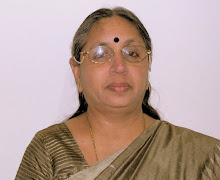 Who knows when it came into existence! But this Attukallu as it is known has been a part of south lndia households since time immemorial. Literally translated, it means ,the moving stone which is an ancient tool used in all south Indian homes, for manual grinding of rice and pulses, mainly to make batters for the ever-satisfying idlis and dosas. Of late, it has fallen into disuse since the launching of electric grinders.
Who knows when it came into existence! But this Attukallu as it is known has been a part of south lndia households since time immemorial. Literally translated, it means ,the moving stone which is an ancient tool used in all south Indian homes, for manual grinding of rice and pulses, mainly to make batters for the ever-satisfying idlis and dosas. Of late, it has fallen into disuse since the launching of electric grinders. I am intrigued by the massive granite attukallu in our ancestral home which is over 110 years old. This is a fixed accessory on the kitchen floor near the wash area– an ancient concept to facilitate easy cleaning. Hemispherical in shape with a central cavity, the attukallu comes with a companion called Kozhavi, a rounded cylindrical shaped granite tool tapering at one end, and broader at the other. This kozhavi rests with broad end into the attukallu’s cavity.The narrower end of the kozhavi is held using the cupped palm over it to move it clockwise for grinding soaked grain.It is an intelligent device to manually grind large quantities of soaked grain into batter. Rotating the kozhavi in the cavity of attukallu crushes the softened grains easily .and it is a common practice to initiate little girls into this art of grinding early in life so that the overworked mothers have some respite.
If it could speak, our attukallu would surely have many tales to tell –both poignant and interesting. Tons of grain must have been pulverized by generations of daughters and daughters in law over a span of 100 years to produce thousands of gallons of batter to feed large extended families! One poor widowed aunt-Parvatham Athai- whose story moves me to tears, must have slogged over this attukallu for nearly 50 years in the era, when young widows were treated as domestic slaves.
The attukallu too bears the scars and wounds of ageing. Its edges, used repeatedly to break coconuts over the years, are jagged at the rim.The cavity has enlarged and the kozhavi has slimmed at waist due to protracted friction. It is overdue for rest now. At its retirement, it at least deserves some commendation!






